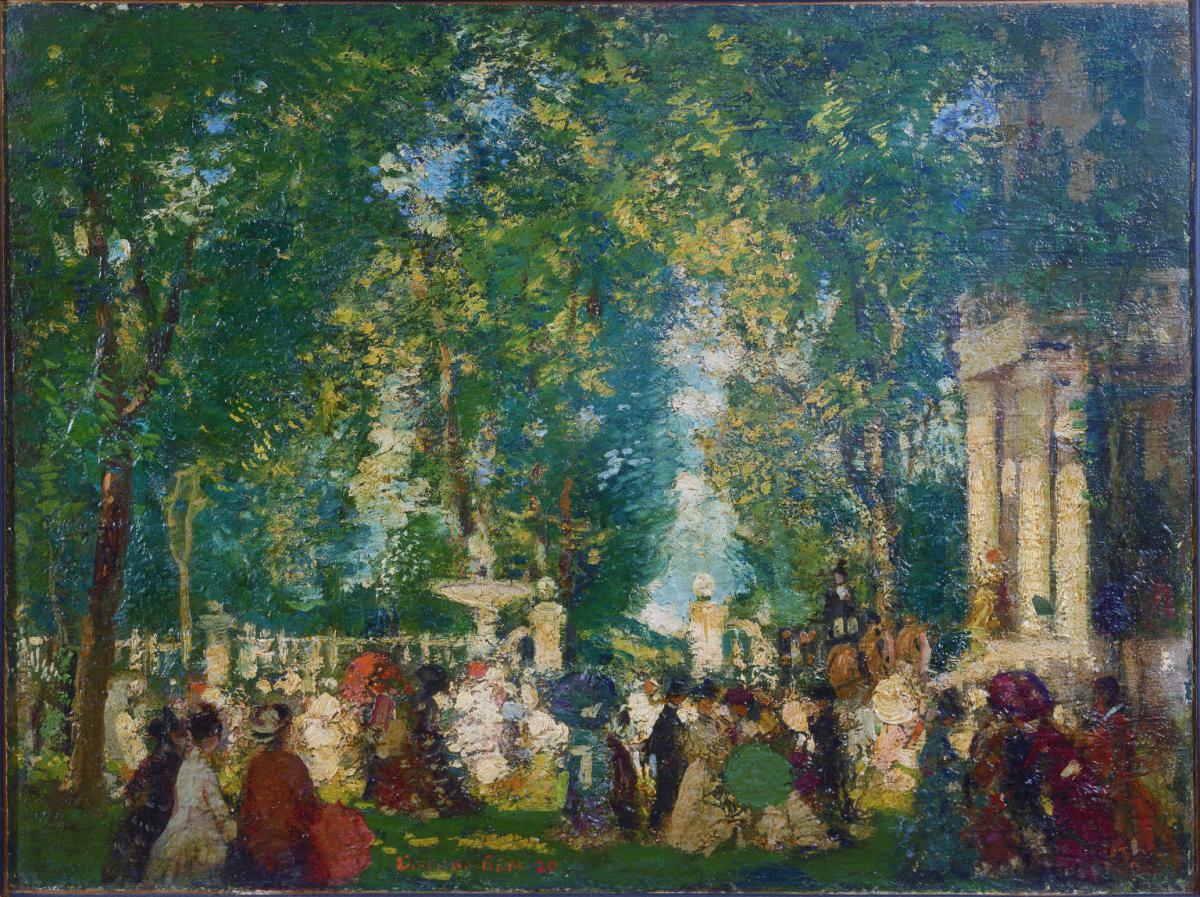The Garden Party
Gifford Beal ( 1920 )

A longtime student of William Merritt Chase at the Shinnecock Summer School on Long Island (Southampton), Gifford Beal found critical and commercial success early in his career. Landscape with figures was a favorite motif in Beal’s pictures and he was said to have the “power to render crowds in motion.” His impressionist landscapes, bathed in color and light and depicting the upper-class enjoying everyday life in the Hudson River Valley from Newburgh to Poughkeepsie, appealed to both critics and collectors alike. By 1918 the Metropolitan Museum of Art had two of Beal’s sparkling impressionist works in its collection.
Although Duncan Phillips knew of Beal’s work in the early teens, his appreciation was deepened by his friendship with the artist through the Century Association where they were both members. Phillips, who saw in Beal a romantic spirit, expressed his admiration for the artist’s work in 1921 when describing this painting: “Crowd-life at spectacular moments gives [Beal] an impressionist’s pleasure in transitory effects of vibrating light and movement….Of his many versions of country houses seen amid stately trees there is none in which the pigment is more jewel-like and animated by a more vivid sense of the passing moment than The Garden Party.”
The Garden Party, its pigments applied with a palette knife, possesses a tactile quality that enlivens its surface. Its subject, however, is the romance of an American “Fête Champêtre,” a delightful dream of “old fashioned beaux and belles resplendent in costumes of the age of crinoline.”